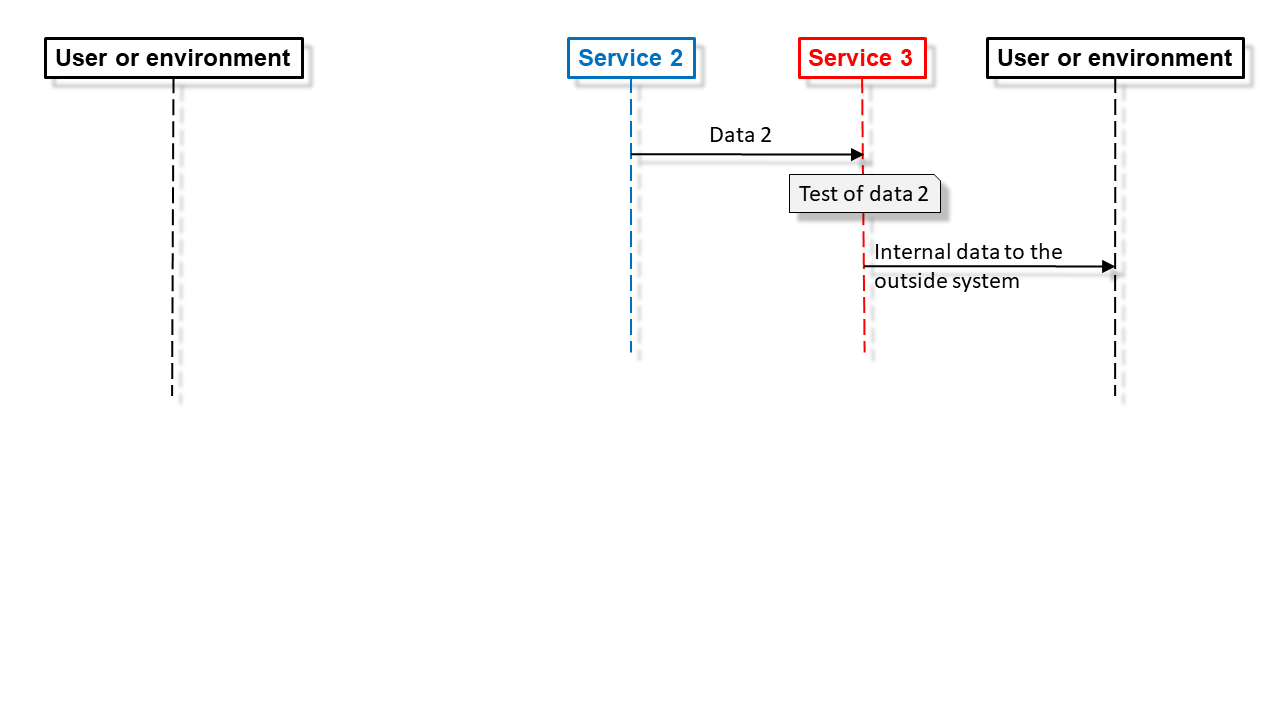InterService Interactions
The InterService Sequence Diagram allows us to detail the interactions between two or more Services, and indicates the information exchanged.
For example, a service Perception could detect a red traffic sign, a windy weather or an overheating component. This service will send these information inside the System, and they will be received by another service which can treat them, like Emergency Braking Decision, Sailing Down or Safety Shut Down.
ADD ANOTHER LIFELINE
You can transform a classic User Story to a InterService Sequence Diagram, by Drag&Drop a New Lifeline on the diagram:
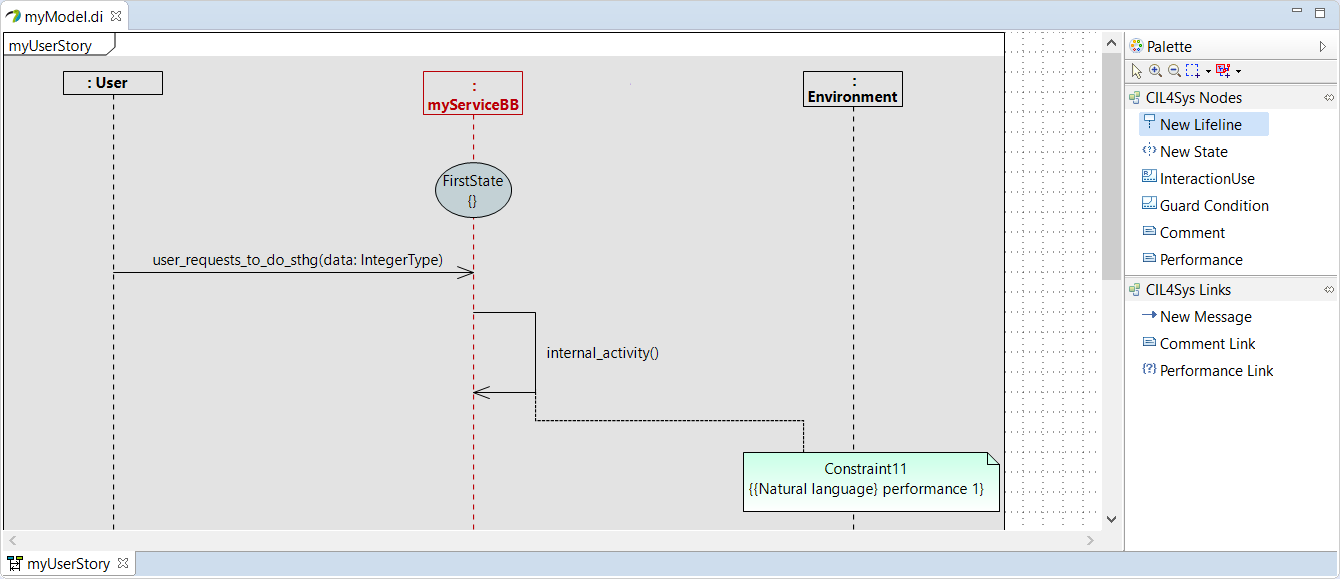
You can select the Life Lines, available for the owner Service, you want to make interact:

If the lifeline of your wanted Services are not listed, click on "New", this will open the owner Service Structure Diagram:
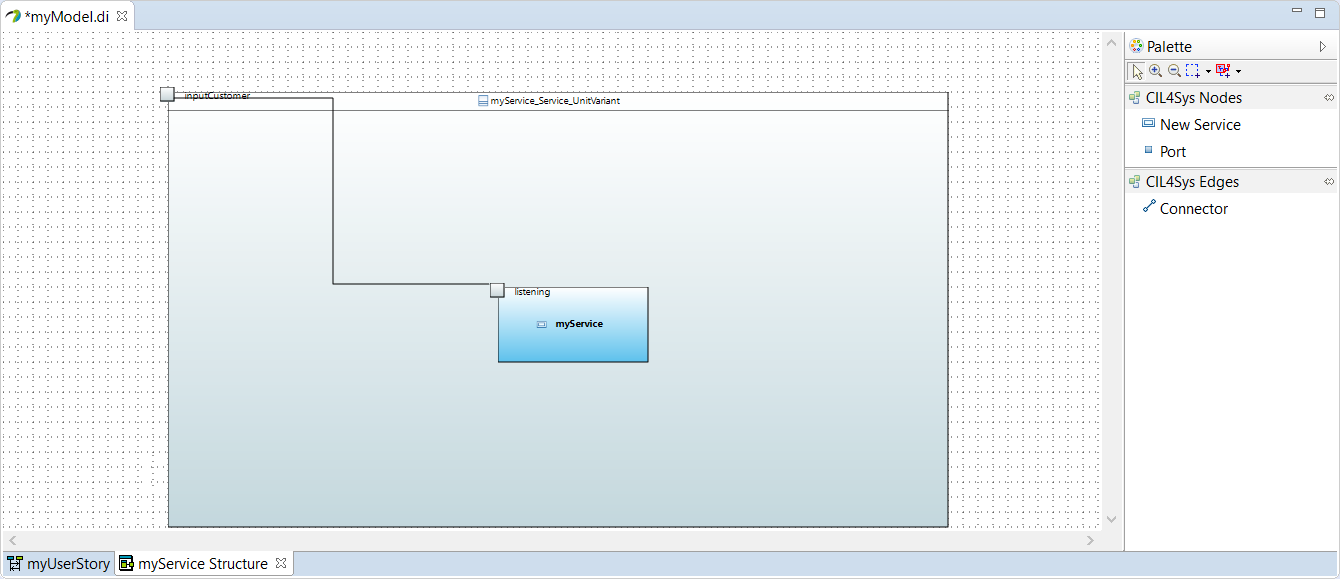
To be able to make other Services available, Drag&Drop *New Service" inside the Service UnitVariant and "Reuse" an existing Service:

Go back to the Sequence Diagram, and Drag&Drop a *New Lifeline" again:

Notice that owner Service has a red lifeline and other Services have blue lifelines:

As service sequence diagram, to draw a flow from or to a service you need to create an interface. Nevertheless, for inter-service exchange, there is two specific diagrams:
- External Provided Interfaces Diagram for the service which receive the flow
- External Required Interfaces Diagram for the service which send the flow
Connections on composite structure diagram are linked automatically.
RESTRICTION
The only restriction is that you must describe the behavior of the service from which the Use Case originates: you can receive and/or send information to other services, but you cannot create Guard Conditions, Internal Activities, etc. to these receivers/senders services.
It will be described in their own InterService Sequence Diagrams, as resumed below:
InterService Communication Expectation:
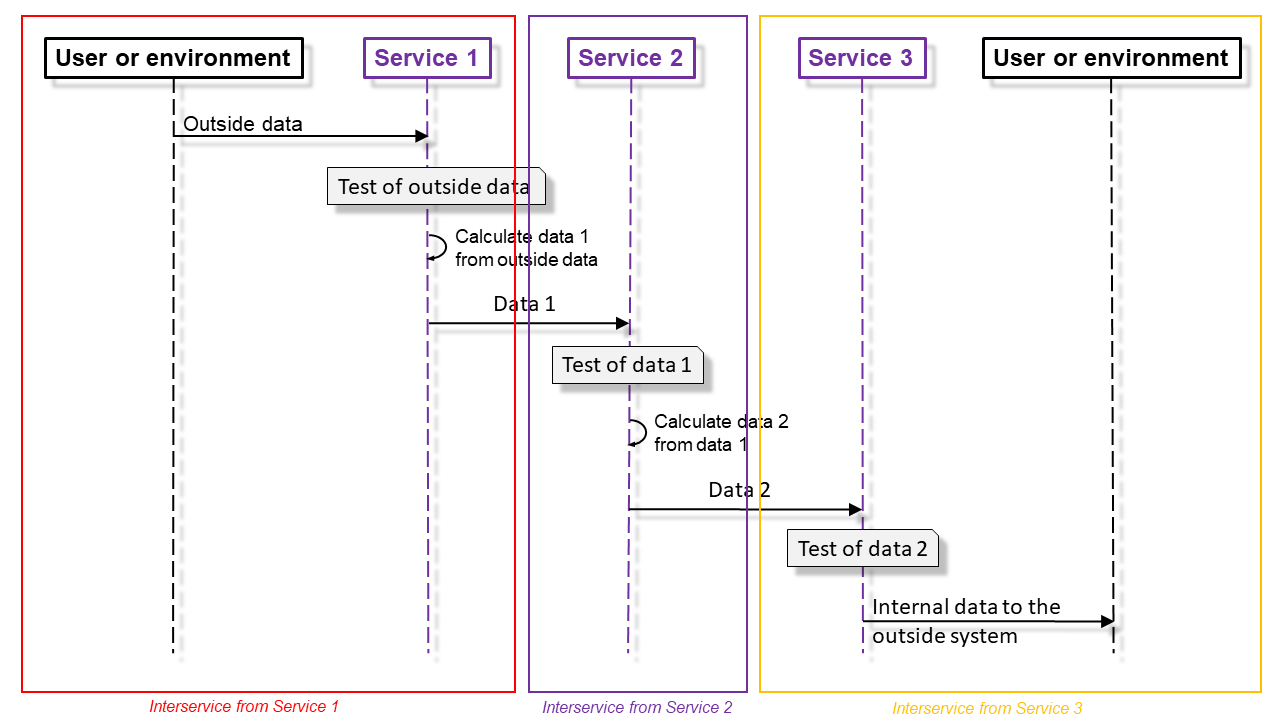
In Service 1:
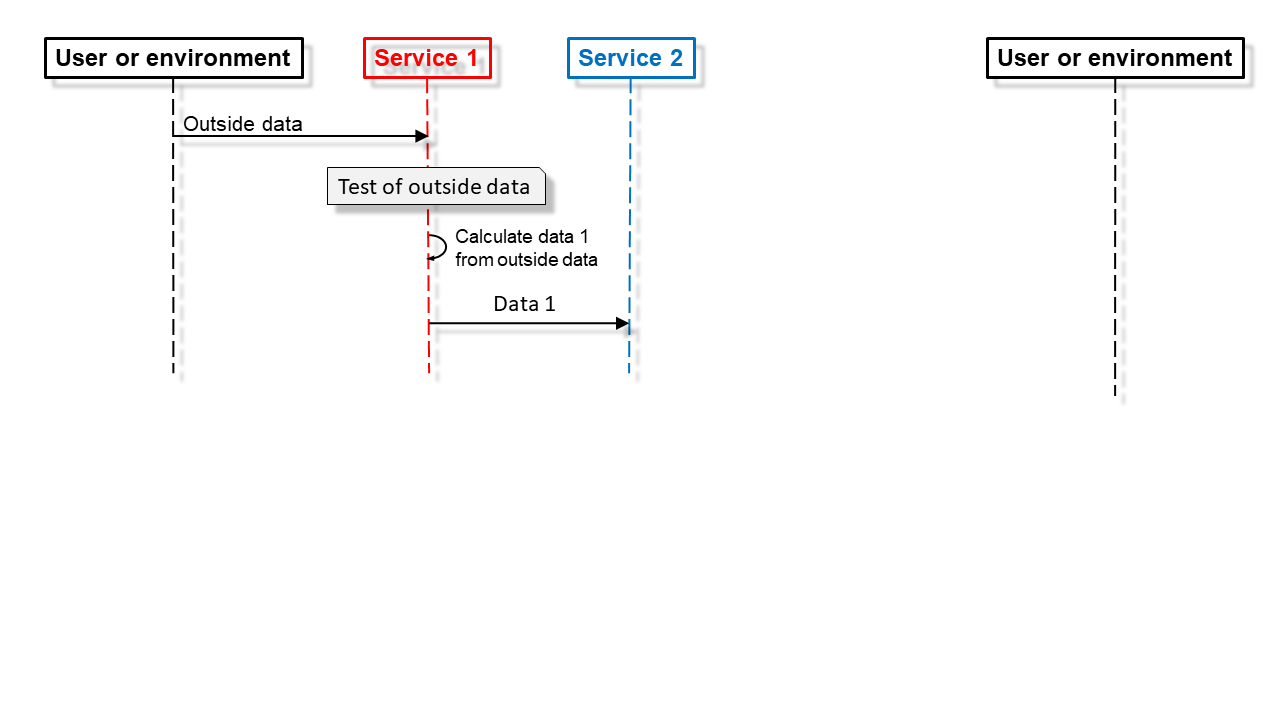
In Service 2:
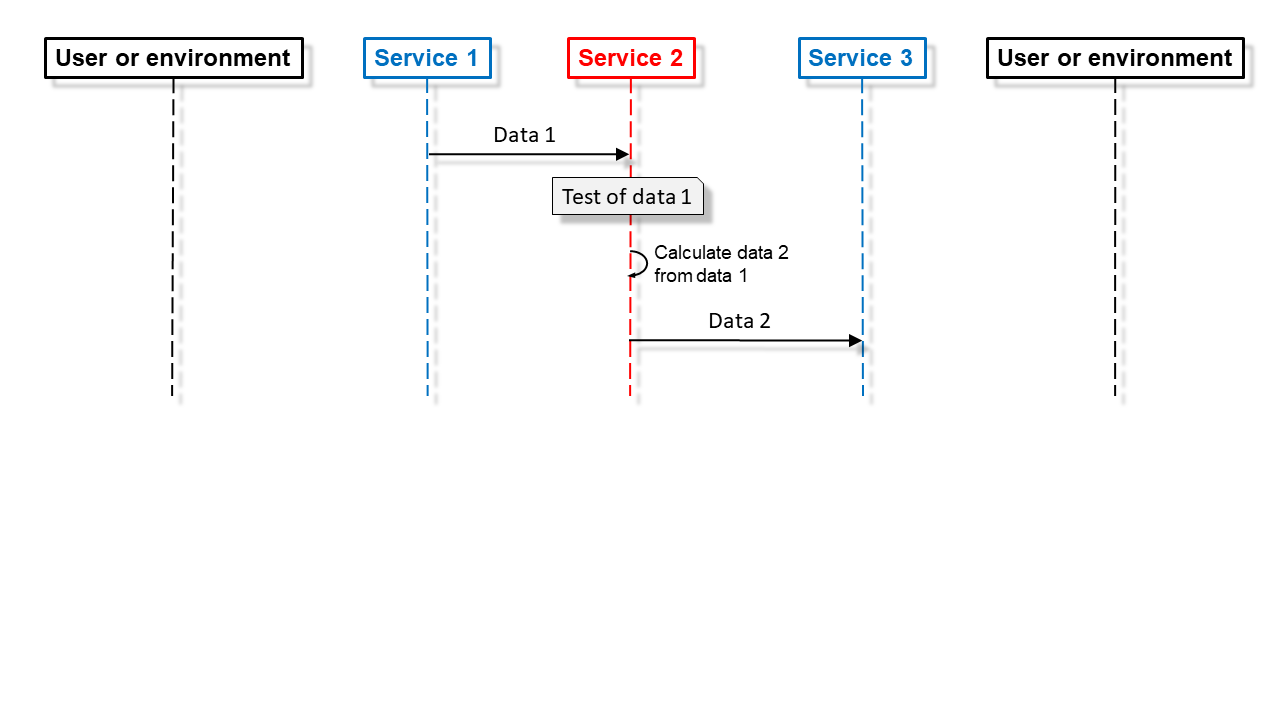
In Service 3:
